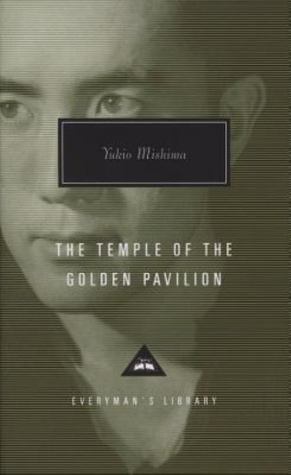Title: The Temple of the Golden Pavilion
Author: Yukio Mishima
First published January 1, 1956
247 pages, Hardcover
ISBN: 9780679433156 (ISBN10: 0679433155)
Rating: 3.98
Overview
In The Temple of the Golden Pavilion, Yukio Mishima masterfully weaves a tale of one man’s unrelenting pursuit of perfection and the destructive consequences that follow. Mizoguchi, an outcast with a severe stutter, becomes obsessed with the Golden Temple in Kyoto.
He sees it as the epitome of beauty and hopes to possess it in its entirety. However, as he begins to notice imperfections in the temple, Mizoguchi becomes convinced that the only way to attain true beauty is through a heinous act of violence.
Set in postwar Japan, this gripping novel explores the lengths to which one will go in the pursuit of an ideal. With an introduction by Donald Keene and translated from Japanese by Ivan Morris, The Temple of the Golden Pavilion is a haunting and unforgettable read.
(Book Jacket Status: Jacketed)
About the Author
Yukio Mishima was a highly regarded author born in Tokyo in 1925. He attended Tokyo Imperial University’s School of Jurisprudence and graduated in 1947.
In 1944, he published his first book, The Forest in Full Bloom, and gained recognition as a significant writer with the release of Confessions of a Mask in 1949. Throughout his life, he continued to write novels, short stories, and plays, producing new works annually.
His most impressive accomplishment, the Sea of Fertility series, which includes the novels Spring Snow (1969), Runaway Horses (1969), The Temple of Dawn (1970), and The Decay of the Angel (1971), is widely considered one of the most essential pieces of Japanese literature from the 20th century. At the age of 45, following the completion of his final novel in the series, Mishima performed seppuku, a ceremonial form of suicide, in a dramatic act that garnered international attention.
Editoral Review
The Temple of the Golden Pavilion is a novel written by Yukio Mishima, first published in 1956. Mishima was a Japanese author and playwright who is widely regarded as one of the most important authors of the 20th century.
The novel is a work of fiction that explores the themes of beauty, perfection, love, betrayal, and destruction in the context of Japanese culture. Set in the post-World War II period, the book follows the life of Mizoguchi, a young man who is obsessed with the Golden Pavilion, a beautiful temple located in Kyoto, Japan.
Mizoguchi struggles with his own imperfections and insecurities while trying to find meaning in his life. His obsession with the temple leads him down a destructive path that ultimately culminates in an act of violence.
The novel is set against a backdrop of political and social turmoil in Japan, as the country tries to rebuild after the devastation of World War II. Mishima uses Mizoguchi’s story to explore the larger issues facing Japan during this time, including the tension between tradition and modernity, the search for national identity, and the struggle for individual freedom in a society that values conformity.
Mishima’s writing style is beautifully crafted, with vivid descriptions of the Japanese landscape and culture. He uses allegory and symbolism to convey deeper meanings and themes, and his characters are complex and nuanced.
The pacing of the novel is slow and deliberate, allowing the reader to fully immerse themselves in the story and appreciate the depth of the characters’ emotions and motivations. One of the strengths of the book is its exploration of the concept of beauty, particularly in relation to the Golden Pavilion.
Mizoguchi’s obsession with the temple is driven by his belief in the transformative power of beauty, but ultimately, it leads to his downfall. The novel raises questions about whether beauty is worth sacrificing one’s morality and integrity for, and whether perfection is attainable or even desirable.
Another strength of the novel is its exploration of the tension between tradition and modernity in Japanese culture. Mizoguchi struggles to reconcile his innate desire for individual freedom with the expectations placed upon him by his society and his family.
The novel highlights the conflicting values of Japanese culture, including the importance of family and duty versus the pursuit of personal fulfillment. One potential weakness of the novel is its slow pacing, which may not appeal to all readers.
Additionally, some readers may find Mizoguchi’s character to be frustrating or unlikable, as he is often passive and indecisive. Overall, The Temple of the Golden Pavilion is a beautifully written and thought-provoking novel that explores complex themes and issues within Japanese culture.
Its relevance to current events and issues, particularly concerning questions of identity and individual freedom, make it a worthwhile read for anyone interested in Japanese literature or culture. I give this book a score of 4.5 out of 5 stars.



